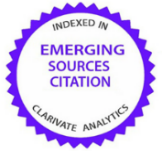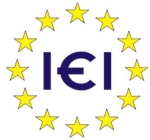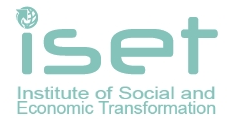The concept of the mechanism of managing the intellectual resources of the innovative active enterprises’ employees (experience of Great Britain)
Abstract
Introduction. Management of competencies of innovative workers in specific conditions of functioning of innovatively active enterprises as producing ecosystems is considered as the dominant direction of managing the process of production of new knowledge, localized within a specific organization, which can increase the consumer value of final consumption goods/services in the process of global value chains’ formation.
Aim and tasks. The purpose of the publication is to summarize United Kingdom practices in the management of intellectual resources of innovatively active enterprises.
Results. The purpose of the United Kingdom science and innovation policy is to develop the professional skills of the population, to organize world-class research and education, to apply knowledge and skills to develop a competitive economy. The established network of science and innovative policy management entities is in line with the open innovation demand model, which implies the establishment of effective cooperation between universities, business organizations, suppliers, consumers. The generalized model of organizational and economic mechanism of regulation of intellectual resources of innovatively active enterprises personnel as knowledge-intensive sociocentric networks is presented in the form of a structured system focused on the behavioral aspects of the activity of subjects of production of new knowledge of means of regulatory and indicative influence on the configuration of regulatory objects that are subordinated to the sub-system in the conditions of global competition.
Conclusions. To fully meet the requirements of innovating the organizational and economic mechanism regulation of intellectual capital’ innovatively active enterprises corresponds to the incorporation into the toolkit of realization of the purpose and tasks of development of the means of forecasting the future state, structure, prospects of increasing the value of its elements. This trend of modernization provides an opportunity to increase intellectual capital through the introduction of Foresight procedures for analysing the impact on it of scientific and technological innovations, formulating and modernizing the mission of forecasting inclusive social capital, comprehensive specification of the regulatory sector, taking into account economic macro and mesoscenarios. At the same time, the proposed means increase the degree of scientific substantiation of the processes of regulation of enterprise development by implementing the analysis of alternative scenarios of intellectual capital growth of innovatively active ecosystems of microeconomic level, open the possibility of developing technological roadmaps for the implementation of targeted programs for long-term research, long-term research development of themes and programs for the implementation of applied social technologies at the request of stakeholders.
Keywords:
personnel management, innovative enterprise, innovative ecosystem, intellectual resources.References
2. Belyakov, G., Belyakov, S., & Shpak, A. (2019). State management of scientific and technological development: foreign experience. Voprosy innovatsionnoy ekonomiki, 9 (3), 657-672. (in Russian).
3. Buchinskaya, O. (2017). The dynamics of the development of employee participation in capital and profits in the UK and EU countries. Agri-food policy of Russia, 7(67), 45-50. (in Russian).
4. Chernomorova, T. (2013). Great Britain: innovation policy and methods for its implementation. Actual problems of Europe, 1, 89-116. (in Russian).
5. Doroshenko, M., Mayls, I., & Vinogradov, D. (2014). Intelligent Business Services: Russian Experience. Foresight, 4, 50-65. (in Russian).
6. Drobyazko, S., Barwińska-Małajowicz, A., Ślusarczyk, B., Zavidna, L., Danylovych-Kropyvnytska, M. (2019). Innovative entrepreneurship models in the management system of enterprise competitiveness. Journal of Entrepreneurship Education, 22(4).
7. Fedulova, L., Marchenko, O. (2015). Innovation ecosystems: essence and methodological basis of formation. Economic theory and law, 2, 21-33. (in Ukrainian)
8. Hesin, E. (2019). United Kingdom: Investing in human capital – a factor in innovative development. Modern Europe, 4, 49-59. (in Russian).
9. Linton, G. (2018). Implicit participants: the contribution of art, humanities and social sciences to innovation. Foresight, 3, 6-12. (in Russian).
10. Malakhovskyi, Y., Gamaliy, V., Zhovnovach, R., Kulazhenko, V., & Cherednichenko, M. (2019). Assessment of the risks of entrepreneurship as a prerequisite for the implementation of innovation projects. Journal of Entrepreneurship Education, 22.
11. Luchaninova, O., Koval, V., Deforzh, H., Nakonechna, L., & Golovnia, O. (2019). Formation of communicative competence of future specialists by means of group work. Espacios, 40 (41), 11.
12. Baklanova, O., Petrova, M., & Koval, V. (2020). Institutional Transmission in Economic Development. Ikonomicheski Izsledvania, 29(1), 68-91.
13. Miles, J. (2011). Service innovations in the 21st century. Foresight, 2, 4-15. (in Russian).
14. Nabulsi, H. (2016). Modern approaches to regulation of public-private partnership. Naukovì pracì Kìrovogradsʹkogo nacìonalʹnogo tehnìčnogo unìversitetu. Ekonomìčnì nauki, 30, 286-296.
15. Nabulsi, H. (2017). Modern modifications of the PF2 public-private partnership model. Scientific Bulletin of Uzhgorod National University. Series “International Economic Relations and the World Economy”, 12 (2), 34-38. (in Ukrainian).
16. Nahapiet, J., & Ghoshal, S. (1998). Social capital, intellectual capital, and the organizational advantage. Academy of Management. Academy of Management Review, 23(2), 242-266.
17. Nikonova, A. (2017). Investing in innovation in the modern world: features and patterns. Synergy, 1, 71-82. (in Russian).
18. Potyshniak, O., Dobuliak, L., Filippov, V., Malakhovskyi, Y., & Lozova, O. (2019). Assessment of the effectiveness of the strategic management system of investment activities of companies. Academy of Strategic Management Journal. 8(4), 1-5.
19. Rezaeian, A., Bagheri, R. (2018). Modelling the Factor that Affect the Implementation of Knowledge Networks. Foresight, 12 (1), 56-67. (in Russian).
20. Saritas, O. (2013). Human Development Technologies: Prospects and Challenges. Foresight, 1, 6-13. (in Russian).
21. HMSO (2006). Science and Innovation Investment Framework 2004–2014. Annual Report 2006 Norwich: HMSO.
22. Scott, R. (2009). Innovation strategy of Great Britain. Foresight, 4(12), 16-21. (in Russian).
23. Seidl da Fonseca R., & Pinheiro-Veloso A. (2018). The Practice and Future of Financing Science, Technology, and Innovation. Foresight and STI Governance, 2(2), 6-22.
24. Shmatko, N. (2011). Scientific capital as a driver of social mobility of scientists, Foresight, 3, 18-32. (in Russian).
25. Smorodinskaya, N. (2014). Network innovation ecosystems and their role in the dynamization of economic growth. Innovation, 7(189), 27-33. (in Russian).
26. DIUS (2008). Innovation Nation. White Paper. London: DIUS.
27. UKRI (2019). UK Research and Innovation. Annual report and accounts 2018 to 2019. Polaris House.
28. Petrova, M., Koval, V., Tepavicharova, M., Zerkal, A., Radchenko, A., & Bondarchuk, N. (2020). The interaction between the human resources motivation and the commitment to the organization. Journal of Security and Sustainability Issues, 9(3), 897-907. https://doi.org/10.9770/jssi.2020.9.3(15)

This work is licensed under a Creative Commons Attribution-NonCommercial 4.0 International License.
If the article is accepted for publication in the journal «Economics. Ecology. Socium» the author must sign an agreementon transfer of copyright. The agreement is sent to the postal (original) or e-mail address (scanned copy) of the journal editions.





















